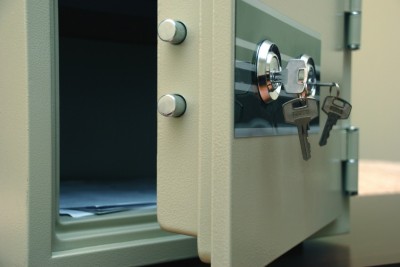 Storing survival basics is often a priority for off-the-grid families, but some of the most important items probably are missing from your safe.
Storing survival basics is often a priority for off-the-grid families, but some of the most important items probably are missing from your safe.
We have become so accustomed to turning on cell phones, tablets and computers to find necessary files and to share photos that the old-fashioned paper counterparts to the files might be getting lost in the shuffle.
What would you need after a fire, flood, tornado, hurricane, power grid-down scenario, or other disaster?
Here 10 items you should consider keeping in your safe:
1. A grab-and-go binder with photos and pertinent information of people in your house. Include any medical or mental health conditions, medication being taken, identifying marks, age, birthdate, and likely places the individual, if a child, could run and hide if frightened during an emergency. Although mom and dad might know all the details well, both could perish during a disaster and it would be a distraught grandparent or neighbor attempting to help out. Making at least two copies of each family member’s page and laminating them with clear contact paper could be helpful.
2. Passports, Social Security cards, shot records, school records, insurance policies, marriage certificate and birth certificates – and copies of all of them. Multiple people may need copies in an emergency. If each parent is armed with all the necessary identifying documents and proof of custody, time will not be wasted doubling back to garner the documents from the other parent in order to retrieve the child from a rescue center or hospital.
Everything You Need To Know To Keep Your Home And Family Safe.
3. Bank statements along with safety deposit box keys. If there is any chance at all of recovering your money after a disaster such as a power grid failure, a paper trail of transactions, proper identification, and proof of account ownership will be needed. For the sake of redundancy, keep cancelled checks, deposit slips, and ATM withdraw slips in the safe, as well.
4. A copy of a filed real estate deed and legal will. Many folks in New Orleans after Katrina could not prove they owned property which had been in their family for generations because the courthouse flooded and deed copies had not been stored in a safe capable of surviving a flood.
5. Photos and a jump drive or other electronic copy of the interior of the home and of belongings. Proof of the state of the home and items contained within it could help garner a positive insurance settlement after a disaster.
6. Gold and silver. While you may have precious metals stored elsewhere, consider storing some inside the safe. It can help to have previous metals in various places after a disaster.
7. Maps of your city, county and state. A traditional map will become extremely beneficial if GPS runs out of battery or fails to work. A map designed specifically for younger children is also a great backup item. The map could simply be drawn by hand or be created on the computer with photos of landmarks, safe hiding places, emergency caches, and relative’s homes incorporated into the document. If children are home alone or left with an injured parent during a disaster, a map they can understand will help guide them to safety.
8. An address book with names of close friends or relatives should be stored with the maps. Although the journey to a relative’s home in a presumably safe location could be a long one on foot, the trek could become necessary. The list of relatives with their relationship to you noted next to their name also could be used for rescuers to locate next of kin for identification purposes or to find a loved one to assume care of orphaned children.
9. A homestead care guide for children and a personal note for them (or a spouse) to read. This could bring solace but also help those left behind maintain the livestock, necessary energy and water systems, and garner deeper knowledge of the planting and harvesting process and first aid. A fireproof safe may not be large enough to include your full off-the-grid reference material, but it could contain a detailed several page instruction guide which corresponds to color-coded or numerical reference material stored elsewhere in the home.
Finally, consider storing a second safe complete with identical materials away from the home. It is not safe to assume that flooding or a fire will not prevent you from reaching the at-home safe, or that your home will even still be standing after disaster strikes.
Sign up for Off The Grid News’ weekly email and stay informed about the issues important to you
 Off The Grid News Better Ideas For Off The Grid Living
Off The Grid News Better Ideas For Off The Grid Living




